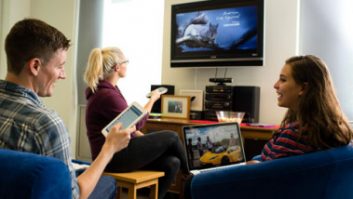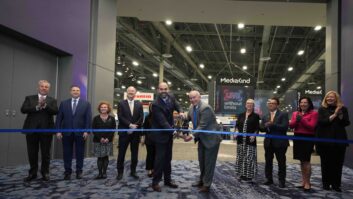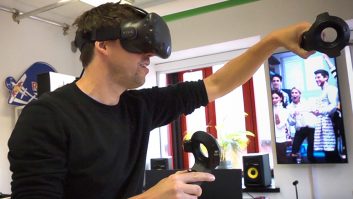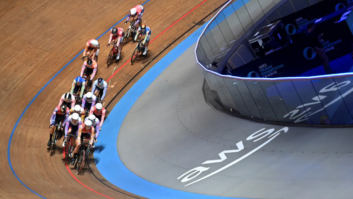
By Charles Dawes, senior director, international marketing, Rovi
Rapid changes in the way that consumers view content means that operators must rethink the way that content is discovered. The electronic programme guide (EPG) is still relied upon by consumers the world over to provide them with detail on entertainment content – be it live television or on demand shows on services such as Netflix.
However, a major shift is occurring to provide next -generation experiences in search, much as previous changes have led to exciting developments in entertainment discovery. Tracing the history of entertainment discovery uncovers a number of major changes that set the scene for the roll out of new technologies in future.
The original guides: magazines and teletext
While there was some variation from region to region, consumers traditionally relied on paper guides and magazine listings as their source of entertainment content. Early innovation came as technology allowed for certain pieces of information to be displayed on the TV screen.
The scrolling guide gave a representation of what was on ‘now’ and what was on ‘next’ across all the channels on the system and automatically scrolled through this list. Additionally, services like teletext in the UK offered an early example of how metadata could be used to bring content to the TV screen in a more interactive way – a signal of greater things to come.
The digital shift
With the digitisation of the guide, new online TV guides started to change the face of entertainment discovery. As the world began to widely turn to these online platforms consumers had access to more and more information to find out when their favourite shows were on. As we transitioned into the digital era in the TV space, the real step change came as the system evolved to give access to guides that allowed for a certain level of navigation using TV remote controls.
The advent of multichannel TV and a proliferation in available content in the early 2000s necessitated a change in guide options. The increase in channels made search functionalities essential in order to allow consumers to find what they wanted to watch in a much more efficient way than they had been previously used to on grid display guides.
In the last few years digital platforms have developed rapidly to offer more functionality and services such as video on demand. The step towards consuming content through a range of devices means that information and entertainment content is now available wherever and whenever consumers want it. The image of catching up on the weekly listing via one’s TV guide magazine is now long gone, and consumers increasingly demand a rich and varied entertainment discovery experience.
Consumers driving change
Consumers have pushed the evolution of the guide and continue to keep entertainment providers on their toes. Changing consumer consumption habits have pushed us into a new realm of entertainment discovery. For example, a recent Ofcom report found that 50 per cent of young people in the UK are no longer watching live TV.
Such market changes have resulted in a push to personalisation, with marketers, retailers and others feeling the benefit of hyper-personalised customer communications. For broadcasters this need not be any different. Personalisation is crucial in order to keep pace with changing customer interests and expectations. In fact, a global Rovi survey found that 70 per cent of subscribers surveyed would be willing to extend their pay TV service contract if they were offered better search or recommendations capabilities.
What’s also fascinating is just how fast the move to on-demand capabilities has happened and the impact this is having on guidance technologies. While support for live TV events such as sport and news will always be strong, other content is moving quickly toward being made available when it is convenient for consumers.
There will of course always be a first time airing for something, but whether this is classed as live TV or not is now up for debate. For example, is the first time a piece of content becomes available on an on demand service ‘live’?
We are also now more able than ever to consume content through different viewing platforms within a household. As consumers may now watch their favourite shows through different online platforms and on different devices, it’s essential to distinguish between the types of recommendations offered on personal and shared devices.
Personal devices require much more granular and targeted recommendations. In contrast, a shared device should provide much more high level recommendations but perhaps focused on specific events such as time or day of the week. Such differentiated recommendations are extremely important to ensure the relevant content is brought to the right consumer at just the right time.
The future of the living room
The entertainment guide has come an extremely long way in the last twenty years, and is by no means showing signs of letting up. We are seeing a change from a ‘one guide fits all’ model where the same content is shown to everyone, to a hyper personalised guide where the core framework is delivered but the actual content differs per household or per person.

So what’s next for the interface? We can expect further advancement of micro gestures on a touch interface, such as a phone, tablet, or an intuitive remote control. We can also see moves towards using your watch to change channels. Crucially, as consumer interaction is now increasingly important, we can expect to see much more in the way of conversational guidance technologies.
Technology and market forces are now driving towards conversational interfaces in smart-connected devices at a rapid pace. However, simply adding speech enablement to existing solutions isn’t enough.
To become fully functional and effective for users, voice technologies must be backed by sophisticated search capabilities, such as dynamic, semantically linked knowledge graphs coupled with deep metadata.
As operators roll out effective voice and search technologies, consumers can expect to reap the rewards of fast, accurate and intuitive voice content search. These technologies will form the bedrock of search for TV shows, providing an intuitive and personalised entertainment experience for consumers.







